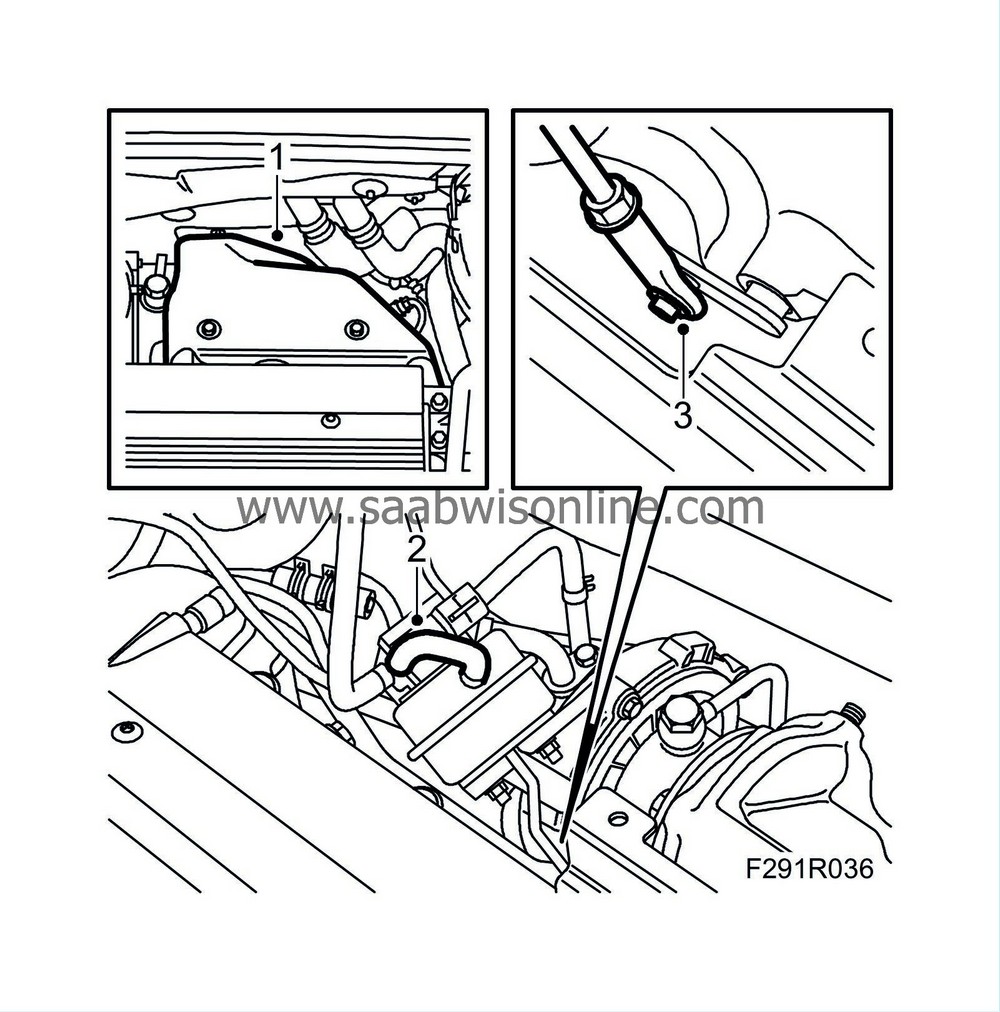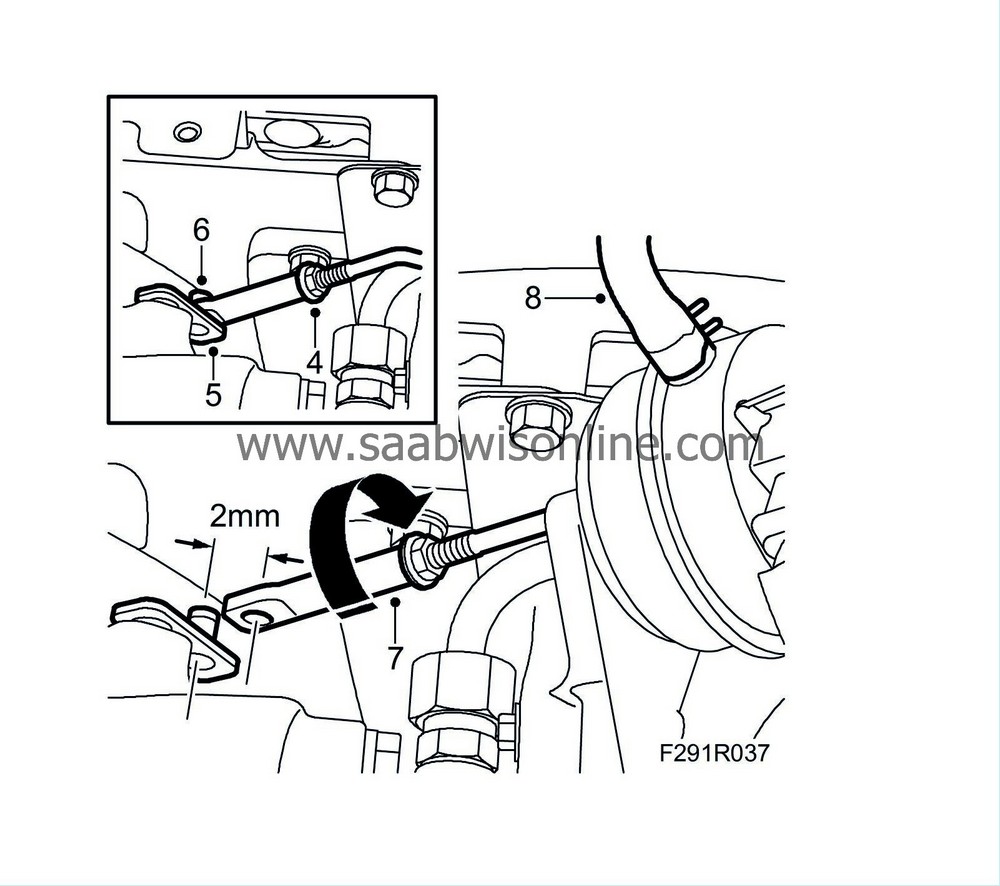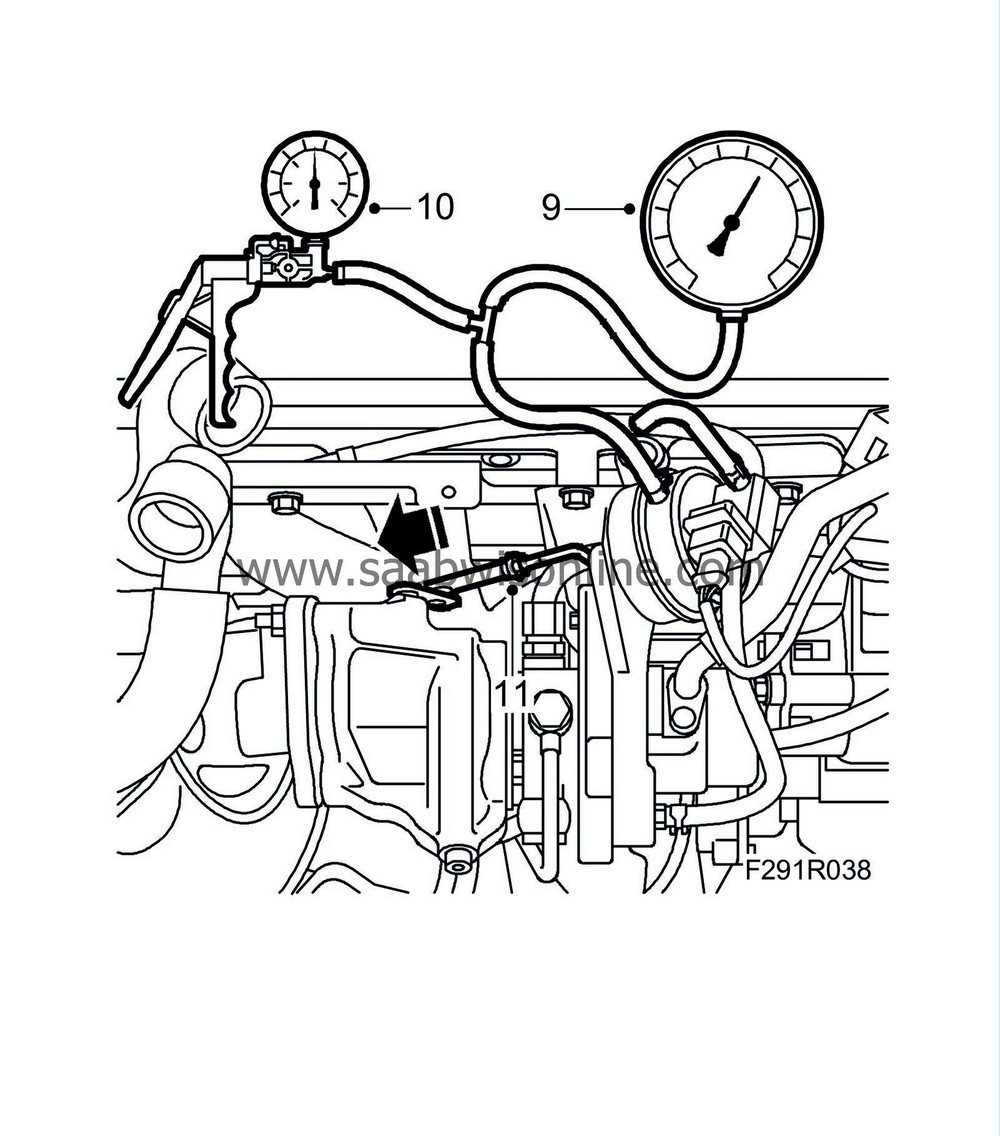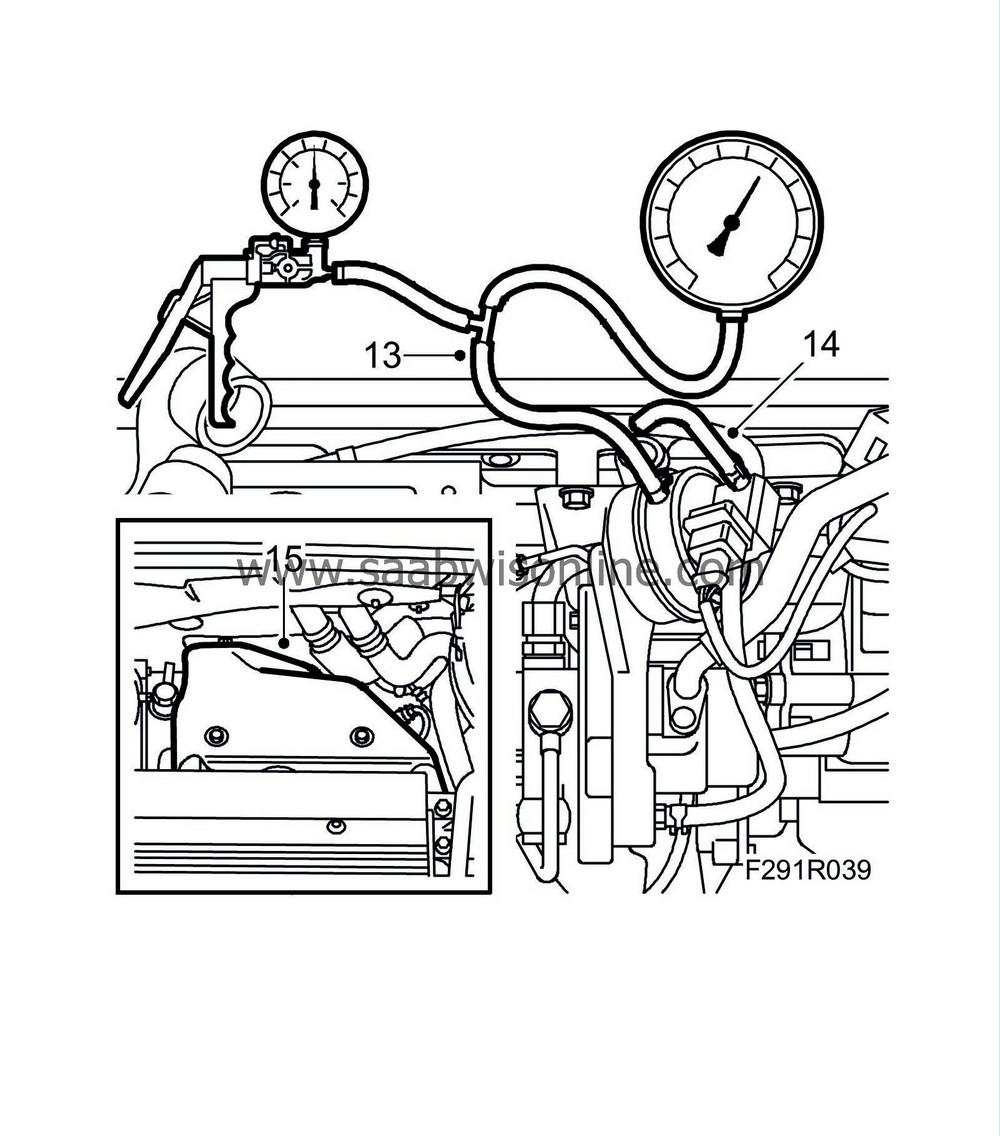Checking and adjusting basic charge pressure, B207
|
|
Checking and adjusting basic charge pressure, B207
|
|
1.
|
Remove the turbo heat shield by undoing the bolts and pulling the shield straight up out of the clip on the back.

|
|
2.
|
Detach the hose from the diaphragm box.
|
|
3.
|
Remove the control arm retaining clip with 83 94 538 Circlip tool.
|
|
4.
|
Grip the pushrod with
83 94 066 Pliers
or similar tool and undo the nut.
B207R:
Use a pair of flat nose pliers and a screwdriver.

|
|
5.
|
Hold the operating arm and remove the pushrod from it. Secure the operating arm as it might otherwise "overcentre".
|
|
6.
|
Move the control arm on the wastegate to the "Closed" position and adjust the end piece so that the pushrod can easily be fitted on the control arm pin.
|
|
7.
|
Detach the pushrod from the control arm pin. Turn the end piece clockwise about 2 turns to attain a tension of 2 mm. Hook the pushrod to the control arm pin.
|
|
9.
|
Pump up the pressure carefully and read off the pressure on the pressure gauge just as the control rod starts to move (approx. 1 mm). The pressure should be 0.25 - 0.27 bar.

|
|
10.
|
If the pressure is too low, shorten the rod until the correct pressure is obtained.
|
|
12.
|
Fit the control rod and clip, grip the control rod and lock the nut.
|
|
13.
|
Remove the pressure gauge and pump.

|
|
14.
|
Refit the hose to the diaphragm box.
|
|
15.
|
Fit the turbocharger heat shield.
|
|
16.
|
Carry out charge air adaptation:
16 a. Run the car to heat up the engine.
16 b. Accelerate full throttle at 2000 rpm a few times. The time the engine speed is in the range 2000-4000 rpm must exceed 2 seconds.
|
Note
|
|
Charge air adaptation must be carried out in as high a gear as possible. If charge air adaptation is not carried out, the customer must be made aware that engine torque may fluctuate slightly the first few times during hard acceleration.
|
|






